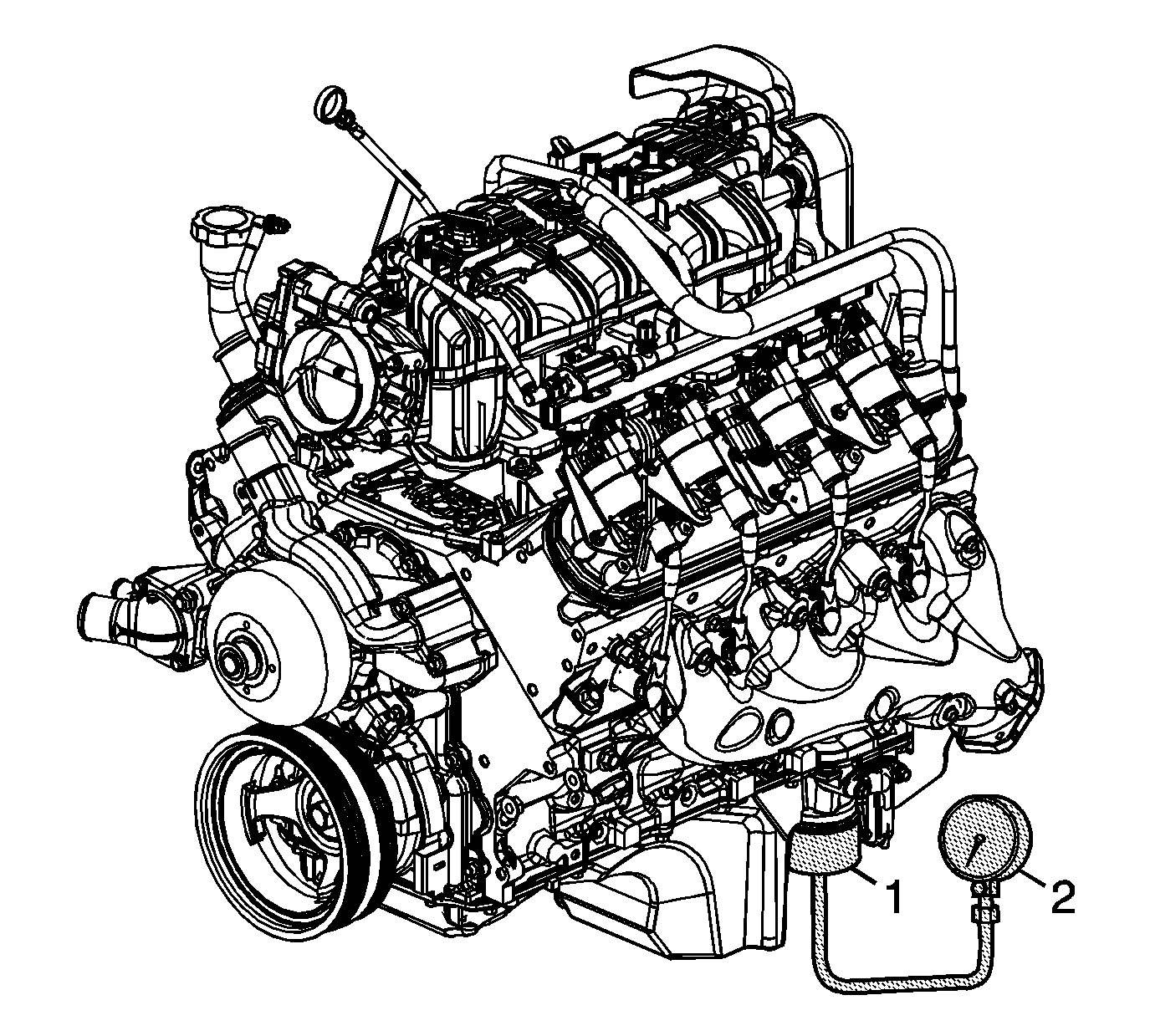Tools Required

- With the vehicle on a level surface, run the vehicle
for a few minutes. Allow adequate drain down time, 2-3 minutes, and measure the oil level.
- If required, add the recommended grade engine oil and fill the crankcase until the oil level measures full on the oil level indicator.
- Run the engine briefly, 10-15 seconds, and verify low or no oil pressure on the vehicle gage or light.
- Listen for a noisy valve train or a knocking noise.
- Inspect for the following conditions:
| • | Oil diluted by water or glycol antifreeze |
| • | Foamy oil, which may be caused by a cut or damaged oil pump screen O-ring seal |
- Remove the oil filter and install the
EN-47971
(1).
- Install the
J 21867
(2), or equivalent to the
EN-47971
(1).
- Run the engine and measure the engine oil pressure.
- Compare the readings to
Engine Mechanical Specifications
.
- If the engine oil pressure is below specifications, inspect the engine for 1 or more of the following conditions:
| • | Oil pump-to-engine block bolts loose |
| • | Oil pump screen loose, plugged, or damaged |
| • | Oil pump screen O-ring seal missing or damaged |
| • | Malfunctioning oil pump pressure relief valve |
| • | Excessive bearing clearance |
| • | Cracked, porous, or restricted oil galleries |
| • | Oil gallery plugs missing or incorrectly installed |
| • | Improper operation of the active fuel management oil pressure relief valve |

